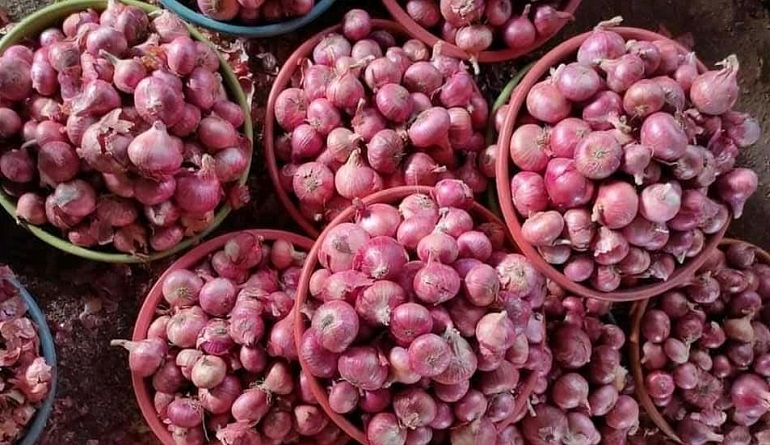
ATM News Network: In an effort to boost onion exports, the government has decided to send delegations to various countries including Malaysia, Indonesia, the Philippines, Germany, the UK, Qatar, Kuwait, Iraq, Seychelles and Mauritius.
The Agricultural and Processed Food Products Export Development Authority (APEDA), in collaboration with the respective Indian missions, will conduct interactions with the respective trade bodies of the countries that would be sourcing onion from India.
Sources said a sharp drop in onion prices because of bumper production has led to distress selling by farmers, especially in Maharashtra, the biggest producer.
The modal retail price of onions as per the Department of Consumer Affairs on Tuesday was `20/kg against `40/kg a year back. In December 2019, retail prices touched `100 kg in many cities, which resulted in a ban on onion exports by the government.
Since the beginning of 2021, the government has not imposed a ban on onion exports. 'The boost in exports could help mandi prices recover in the coming months,' an official told FE.
India exported a record $523 million worth of onion (1.7 million tonnes) in the first three-quarters of the current fiscal (20223-23), which is 16% more than in the same period last fiscal, the commerce ministry recently said in a statement.
In 2021-22, in terms of exports, India stood at the third spot in global onion exports, with 1.5 million tonnes (mt) of onion worth $ 460 million to various countries. India has around a 5% share in the global onion trade.
Bangladesh (37%), Malaysia (14%), Sri Lanka (12%) and Nepal (8%) had a major share in onion exports in the last fiscal.
Onion retail inflation declined by 19.98% on year in January 2023.
Negative onion inflation last month was due to a bumper output of 31.12 mt in the 2021-22 crop year, against the production of 26.64 mt in 2020-21.
India is the biggest producer of onion and Maharashtra, Madhya Pradesh, Karnataka and Gujarat have more than 60% share in the country’s production.
Rabi onion, harvested during April-June, accounts for around 65% of the country’s onion production and meets consumers’ demand till the Kharif crop is harvested in October-November. Kharif onions are not stored because of their higher moisture content, thus entering the market directly.
To address the post-harvest losses of onions, including losses incurred from inefficient storage and processing, the Department of Consumer Affairs has announced a grand challenge for the development of ‘technologies for primary processing, storage and valorisation of onions’.
:) Update yourself with the latest agribusiness news in English and Marathi with Agri Trade Media. Subscribe to Agri Trade Media on Facebook, Instagram and YouTube for more agri B2B news.
(Except for the headline, this story has not been edited by ATM staff and is published from a web feed.)